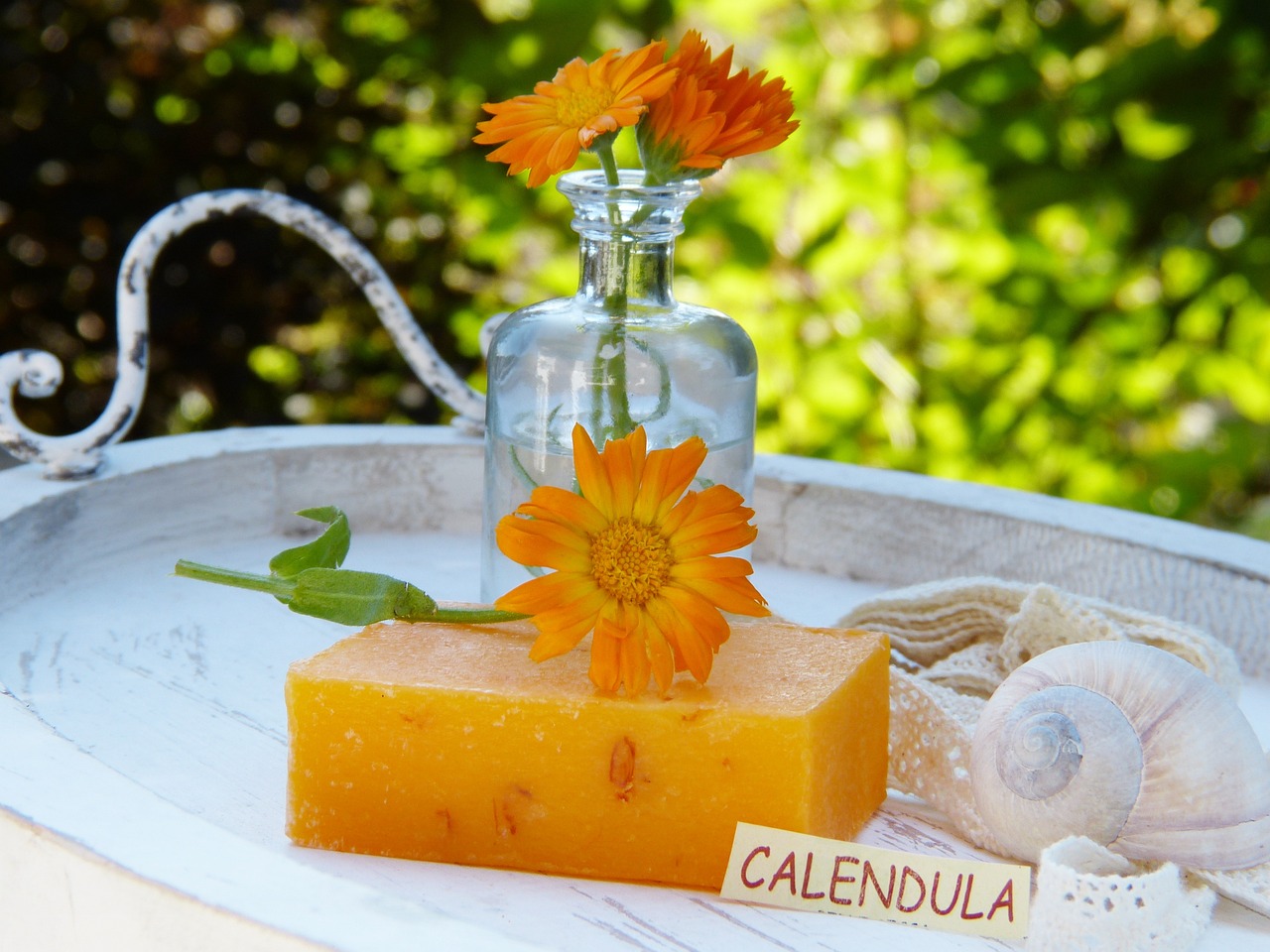Calendula
Overview
The Calendula officinalis, commonly known as pot marigold, is celebrated for its vibrant, ornamental flowers and medicinal virtues. Renowned in the herbal world for its soothing effects on the skin and digestion, Calendula is a staple for natural remedies, with its topical and oral applications backed by centuries of traditional use. However, its benefits when smoked are not well-documented, and those interested in herbal smoking should approach with caution.
Common name(s): Pot marigold, garden marigold, English marigold, Scottish marigold
Scientific name: Calendula officinalis

Characteristics
Known for its vibrant yellow and orange flowers, anti-inflammatory properties, and versatility in culinary, cosmetic, and medicinal applications.
Region
Native to southwestern Asia, western Europe, and the Mediterranean; thrives in temperate climates.
Natural Habitat
Typically found in temperate regions, including meadows and fields.
Cultivation
Prefers full sun to partial shade, moderate watering, and well-drained, fertile soil with a neutral to slightly acidic pH.
Traditional Usage
Calendula has been lovingly utilized through history for a host of traditional applications. Notably, its roles span across the culinary, cosmetic, and medicinal realms. As a testament to its versatility, here are some of the ways it has been integrated into everyday life:
- Calendula has been a go-to ingredient to soothe skin irritations, offering gentle relief and support for healing.
- Its natural properties make it a trustworthy companion in the healing of wounds, providing care for the body.
- Beyond its health benefits, Calendula also found use as a natural dye, adding vibrant hues to fabrics and textiles.
Whether for its beauty or for its beneficial properties, Calendula continues to be a cherished herb in various aspects of living.
Historical Usage
Used historically for soothing skin, healing wounds, culinary flavoring, cosmetic applications, and as a dye.
Common Usage
Commonly used in herbal remedies for skin care, wound healing, and as a soothing agent in teas and topical products.
Effects
Calendula, recognized for its vibrant color and utility, has been traditionally used for various health-related purposes. It provides notable benefits due to its anti-inflammatory, anti-viral, and anti-genotoxic properties. Frequently found in herbal products and cosmetics, it’s a versatile plant with multiple uses extending beyond decoration.
Overall, Calendula may promote:
- Skin health, by soothing irritations and accelerating wound healing
- Improved immune function, thanks to its active compounds like flavonoids, carotenoids, and saponins
It’s widely available in different forms, such as creams, oils, and teas, for both topical and oral use. When used correctly, Calendula is generally safe, but those with sensitivities to the Asteraceae plant family should approach with caution to avoid allergic reactions. Always consider product specifications or consult a healthcare provider for proper dosage guidelines4.
While its effects when smoked haven’t been thoroughly investigated, its established uses in other forms provide a glimpse into the plant’s therapeutic potential. Calendula continues to be a subject of interest due to its indispensable role in natural health and wellness.

A butterfly perches on vibrant calendula flowers, nature's remedy for enhancing skin health, accelerating wound healing, and strengthening immune defenses.
Effects when smoking
If you’re considering the smoking of Calendula for its potential effects, it’s important to note that this application of the herb is not widely documented or recommended. However, we can derive some insights based on the properties of Calendula that may be experienced through other methods of use. When smoked, the user might anticipate some of the herb’s general therapeutic benefits, although more research is needed in this area. Here are a few potential effects that could be hypothesized:
- Anti-inflammatory properties: Calendula is known for its capacity to reduce inflammation, which might help soothe irritated tissues in the respiratory tract.
- Calming influence: Anecdotally, some users report a calming sensation, which may be attributed to the herb’s mild sedative effects.
- Antiviral benefits: While commonly applied topically or ingested, the antiviral components of Calendula could hypothetically provide respiratory support if inhaled.
- Skin health: Although smoking is generally not associated with skin health, the properties of Calendula that promote skin repair might also help in repairing tissue damage caused by smoke inhalation on a very minor scale.
- Immune function: Compounds in Calendula may bolster immune defenses, potentially benefiting overall well-being.
It’s crucial to exercise caution if attempting to smoke Calendula due to the limited information on its effects when inhaled. Always consider the potential risks and consult a healthcare provider before exploring new herbal practices4. Remember that smoking any substance can pose risks to your health and well-being.
Flavor Profile
Mildly bitter and occasionally used as a culinary spice or garnish.
Edible Parts
Flowers
Effects when Smoked
Effects of smoking are not well-documented and not recommended.
User Experiences
Users typically report relief from skin irritations and improved digestive health when using Calendula.
Medicinal Benefits
Calendula is esteemed not just for its aesthetic appeal but also for its potential to support health. Known for its soothing effects, the herb is particularly praised for its:
- Anti-inflammatory properties, helping reduce swelling and redness.
- Anti-viral capabilities, making it a candidate for combating certain pathogens.
- Possessing anti-genotoxic elements which may protect cells from genetic damage.
- Encouragement of wound healing through stimulation of tissue regeneration.
- Support in maintaining skin health, aiding in the treatment of cuts, burns, and other skin irritations.
- Contribution to bolstering immune function, thanks to its array of active compounds[^4].
Whether incorporated into creams, oils, or teas, Calendula’s therapeutic effects shine through its diverse applications. However, those with allergies to the Asteraceae family should approach its use cautiously. It’s always important to align usage with recommended dosages and guidance from a healthcare provider.
History and Folklore
Throughout history, Calendula has been a versatile herb, valued for more than its striking yellow and orange flowers. In the culinary realm, it added vibrance to dishes, while in cosmetics, it contributed to beauty regimens.
Its most significant historical use, however, was medicinal. Healing properties were extensively leveraged to soothe skin irritations and expedite wound recovery. Additionally, the vibrant petals served as a natural dye for fabrics, intertwining practicality with everyday life. These traditional applications signal Calendula’s longstanding reputation as a remedy and a household staple[1^].

Calendula: A Historical Multipurpose Herb for Healing, Cooking, and Dyeing
Side Effects and Contraindications
While Calendula is generally safe for many, it’s important to be aware of possible side effects and contraindications.
The main concern with the use of Calendula centers around allergic reactions. This herb belongs to the Asteraceae family, so those with allergies to plants like ragweed, chrysanthemums, marigolds, or daisies may also react to Calendula4. Skin reactions such as itching, rash, or eczema are potential side effects, particularly in sensitive individuals. A simple patch test before more extensive topical use is a good precautionary measure.
For those pregnant or breastfeeding, it’s wise to avoid Calendula due to insufficient safety data. As with many supplements and herbs, if you’re on medication or have a health condition, it’s crucial to consult with a healthcare provider before incorporating Calendula into your routine5. This helps ensure that it does not interfere with existing treatments or conditions.
Legal Status
- Calendula is legal and widely available in many countries.
Legal restrictions are not commonly associated with Calendula, which allows for its easy purchase and use in various forms—ranging from creams to teas. Always check local regulations to ensure compliance, especially if Calendula is intended for therapeutic use or consumption4.
It’s also advisable for individuals to consult with healthcare providers regarding its use, particularly when it involves herbal smoking, due to the lack of widespread information on the practice.
References
1. Calendula officinalis – Wikipedia, https://en.wikipedia.org/wiki/Calendula_officinalis
2. Calendula – Wikipedia, https://en.wikipedia.org/wiki/Calendula
3. Calendula plant characteristics, uses and composition – Botanical online, https://www.botanical-online.com/en/botany/calendula-plant
4. Calendula | Description, Uses, & Facts | Britannica, https://www.britannica.com/plant/calendula
5. The 7 Benefits Of Calendula: Dosage & Safety – The Botanical Institute, https://botanicalinstitute.org/calendula/
Image Credit: silviarita
Image Credit: donvikro
Image Credit: KAVOWO
Nicolas Duval
Nicolas is a passionate advocate for nature and the art of wildcrafting. His dedication shines through in Wildcraftia, a website he meticulously crafted to serve as a haven for nature enthusiasts worldwide. Driven by a deep appreciation for nature’s connection to humanity, Nicolas embarked on his journey in 2011 with SmokableHerbs, a platform showcasing his love for nature’s bounty. Building upon this foundation, he established Smokably, a thriving online store offering premium herbs and blends to a global audience.
